Family : Cirrhitidae

Text © Giuseppe Mazza

English translation by Mario Beltramini
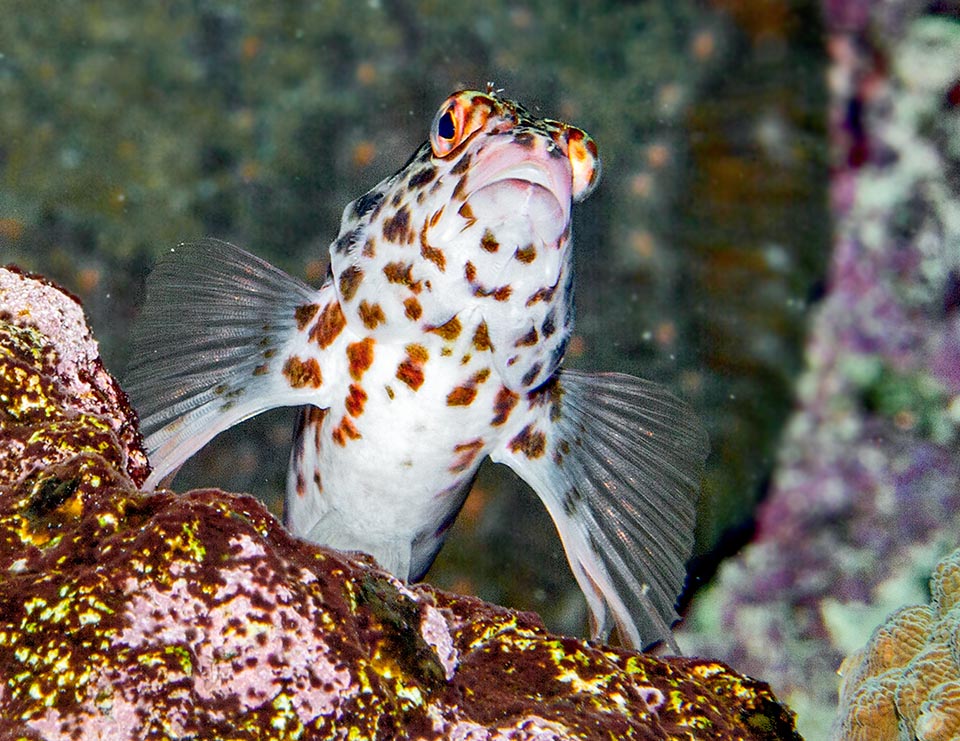
Coral hawkfish (Cirrhitichthys oxycephalus) has a very vast distribution area in the tropical Indo-Pacific © Giuseppe Mazza
The Coral hawkfish (Cirrhitichthys oxycephalus Bleeker, 1855) belongs to the class of Actinopterygii), the ray-finned fishes, to the vast order of Perciformes and to the small family of Cirrhitidae with 9 genera and 32 species.
The etymology of the genus “cirritichthys” comes from the Latin “cirrus” = tuft of hair and from the Greek “ichthus” = fish, with a clear reference to the small tufts present on the spiny rays for the dorsal fin and close to the nostrils.
The name of the species “oxycephalus” comes from the Greek “oxys” = pointed and “kefale” = head, with reference to the head, pointed in comparison with the squat body.
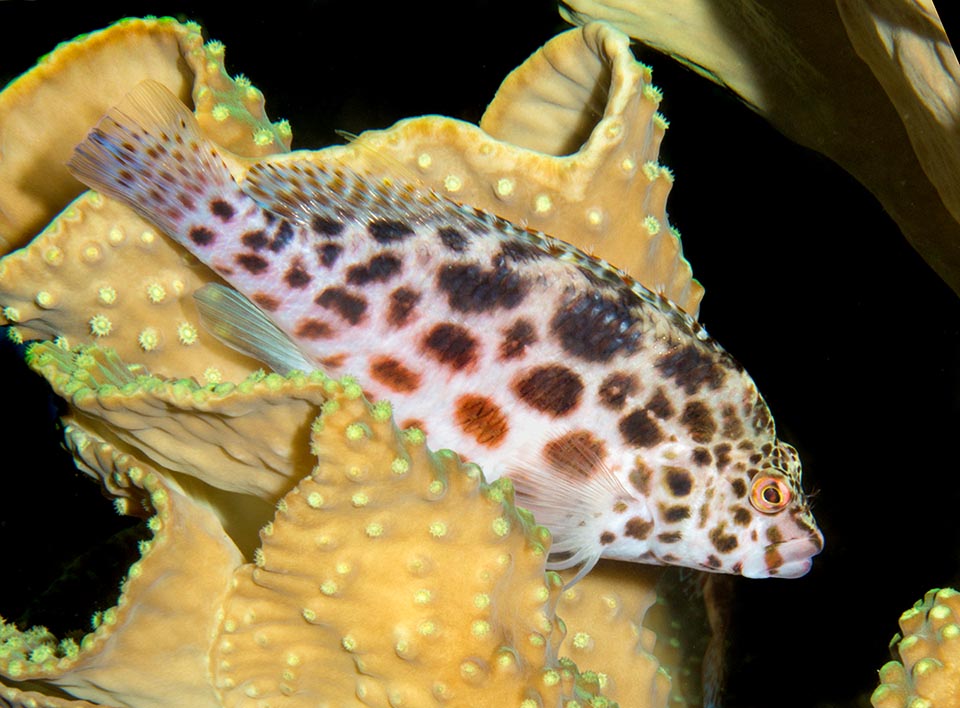
13 cm long at most, it has a stocky body with dark reddish spots, more or less intense, decreasing towards the tail © Giuseppe Mazza
The Italian name has to deal with its behaviour. It recalls, in fact, that it swoops down on the preys like a hawk, and then disappears like a goblin thanks to its rapid movements and its camouflaging design.
Zoogeography
Like Oxycirrhites typus, which belongs to the same family of the Cirrhitidae, the Cirrhitichthys oxycephalus has a very vast diffusion area interesting both sides of the Indo-Pacific.
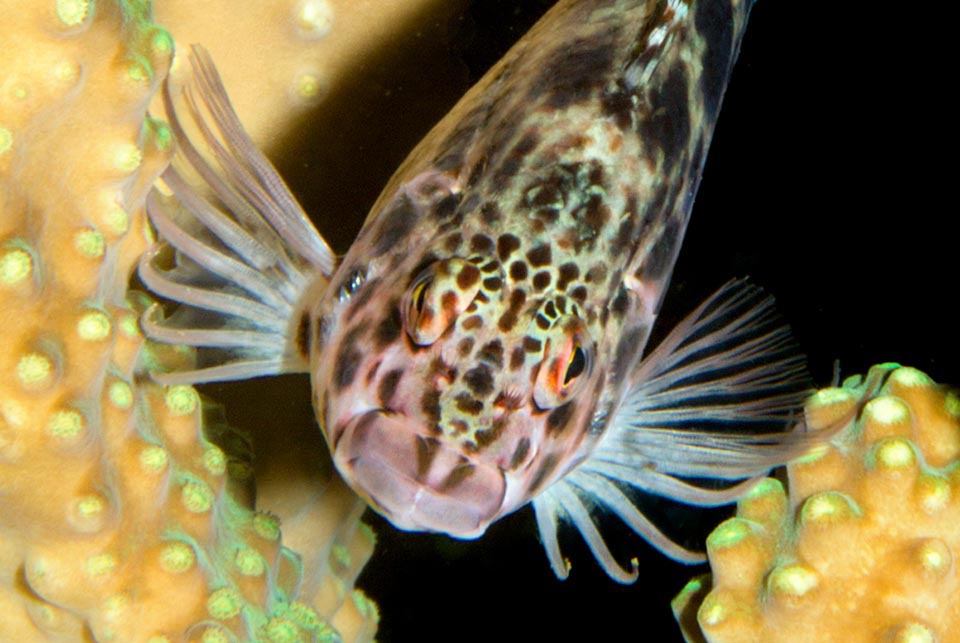
It doesn’t have swim bladder because it is of no use, seen that it moves among the madrepores using as hands the free rays of the pectoral fins © Giuseppe Mazza
We find it along the African coast, from South Africa to the Red Sea, and then indicatively, at the Maldives Islands, in Australia, Indonesia, New Guinea, Micronesia, Philippines, Taiwan and the southern part of Japan. In the southern hemisphere, it reaches Tonga and New Caledonia, eastwards, the Galapagos and the American continent. In fact, it is at home in southern California, in Mexico, Guatemala, Nicaragua, Costa Rica, Panama and Colombia.
Ecology-Habitat
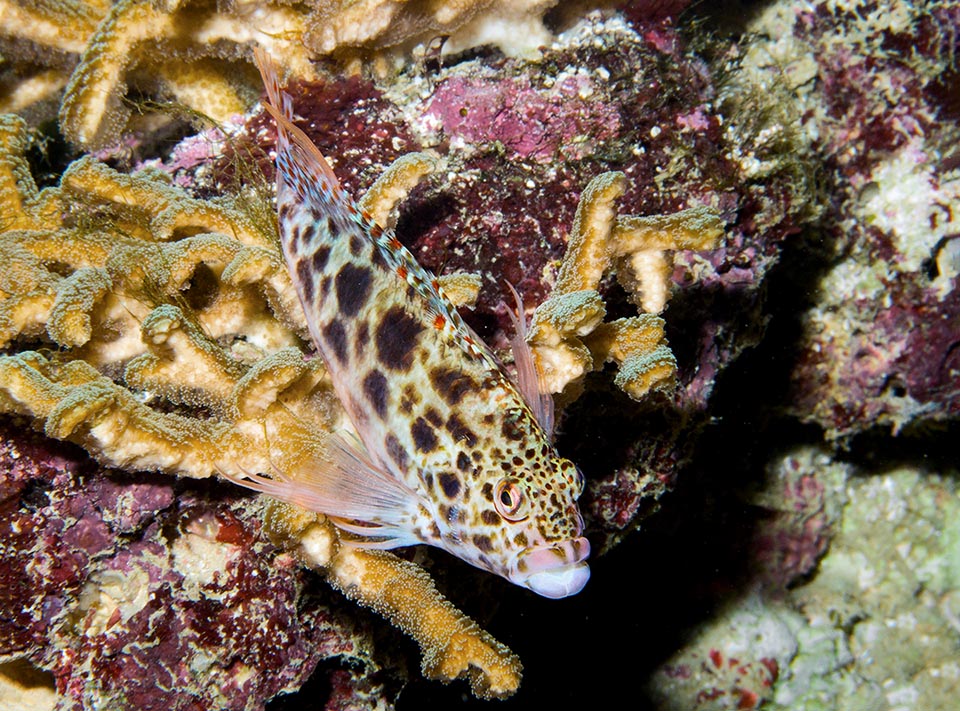
Despite that, it can make spectacular leaps for reproducing or for swooping down like a hawk on the prey it’s waiting for, like here, camouflaged, ready to jump © G. Mazza
It lives on the bottom, between corals and madrepores in the lagoons and along the slopes of the reefs up to 40 m of depth.
Morpho-physiology
The rather stocky body does not exceed the 13 cm.
There is only one dorsal fin with 10 spiny rays, ending in the tufts which have originated the name to the genus, and 12-13 soft rays.
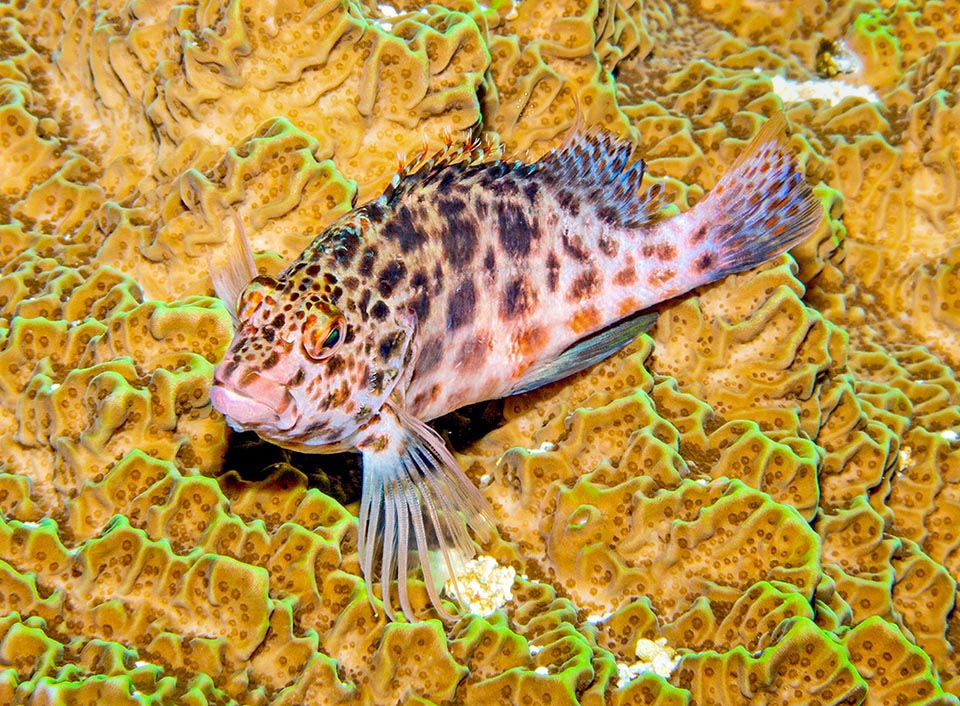
It eats small fishes and small crustaceans and is a hermaphrodite proterogynous species, that is with females that may transform in males © Giuseppe Mazza
The anal counts 3 spiny rays and 6 unarmed, whilst the pectoral ones show, as customary in the hawkfishes, some long and thick rays, free between them, serving to the fish for clinging and moving among the corals. The caudal fin is truncated.
The head, with two curls behind the nostrils, shows solid fleshy lips and small teeth bent inwards, for holding the preys.
The mimetic livery foresees some reddish spots, more or less lined and decreasing towards the tail, which interest also the lips and most of the fins.
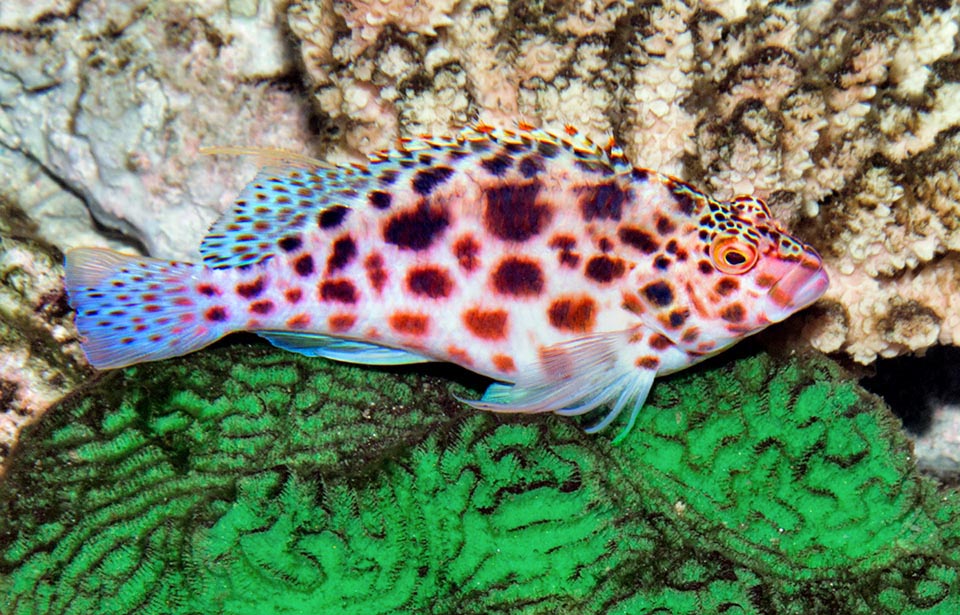
These hold a small territory and a harem. When they pass away the largest female changes sex and replaces them © Giuseppe Mazza
There is no swim bladder, but this is of no use, seen that it spends hours and hours motionless, moving the eyes only, more than swimming, it proceeds by fast leaps.
Ethology-Reproductive Biology
The Coral hawkfish nourishes greedily of small fishes and small crustaceans. It is a protandric hermaphrodite species: all the individuals come to life as females, but then may, ageing, transform in males.
These ones, rather territorial, have a small harem. The marriages take place at dawn with showy leaps from the bottom and the fecundation on the fly of the planktonic eggs.
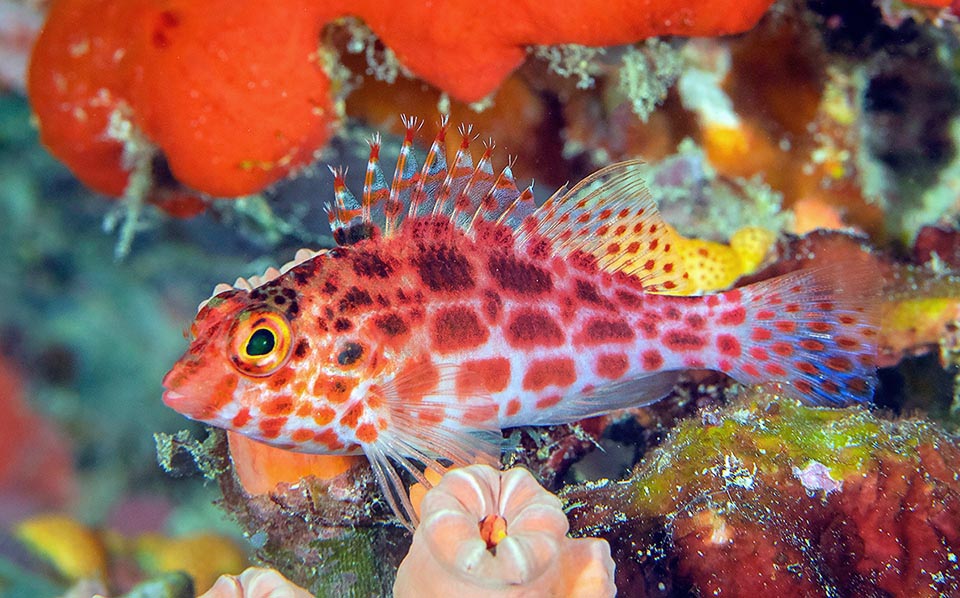
For the reproduction the planktonic eggs are fecundated while flying with dramatic leaps from the bottom. Cirrhitichthys oxycephalus is not endangered © Rafi Amar
Seen the vast distribution and the fact that it has practically no foes, man included, Cirrhitichthys oxycephalus is not endangered. The fishing vulnerability index is very low, marking only 10 on a scale of 100.
Synonyms
Cirrhites oxycephalus Bleeker, 1855; Cirrhites grandimaculatus Liénard, 1891; Cirrhites murrayi Regan, 1909; Cirrhitichthys corallicola Tee-Van, 1940.
→ For general information about FISH please click here.
→ For general information about BONY FISH please click here
→ For general information about CARTILAGINOUS FISH please click here.
→ To appreciate the BIODIVERSITY of BONY FISH please click here.
→ To appreciate the BIODIVERSITY of CARTILAGINOUS FISH please click here.
